

 |
 |
A problem common to all collectors of
miniature bottles is the evaporation of the content.
The corks, especially if they have lost skin, let it evaporate
quickly, liquor, even the metal caps and Velcro flap, especially
if they have suffered shock,
can detach from their original position and let it evaporate
content.
I noticed that the only miniature that does not evaporate almost
never are the ones that have the plastic cap,
but they are also less sought after by collectors mignon.
The type of liquor evaporation influences: the spirits such as
Cognac or Whisky tend to
evaporate more (the higher the percentage of alcohol and more
liquor tends to evaporate).
If the cap has a perfect closure, the phenomenon does not occur,
however, the evaporation should
be better tolerated in miniature vintage, while the phenomenon is
not recent in miniature
should be almost never present.
To prevent the evaporation of its board of miniature spread,
using a brush, a layer of
Glue on the cork as well as use a brush to work faster, you can
pour in a Vinavil
container and immerse the bottle cap, in this case care must be
taken that the
does not glue down the miniature.
Some collectors use the melted wax soak the cap, but the end
result, from the point of view
appearance is not satisfactory, the Vinavil once dry it forms a
transparent film without ruining
any bands of paper, in fact, using the wax, the bands take on an
unpleasant appearance "anointed"
as if they were immersed in oil.
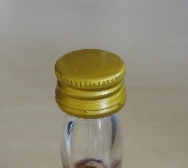
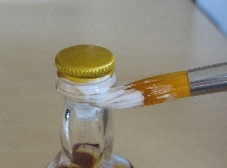
Vinavil not all are created equal: some
types of Vinavil are not fit for purpose, as when dry it
layer, instead of becoming transparent is white (before starting
to treat mignon Board
however, to perform the tests).
From the point of view of safety wax is much better, as it
solidifies immediately,
closes any loss of the cap, but for the reasons mentioned above
is not recommended;
Vinavil the other hand takes much longer to dry, once it was
decided to spread the
Glue, if it forms a bubble of air at any point of the cap,
means that the miniature is a lack of closure. (example):
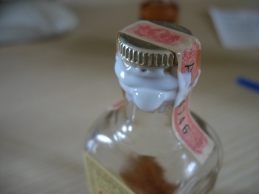
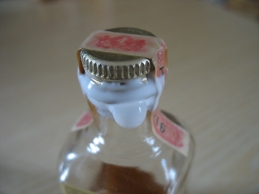
For this I recommend you wait Vinavil of
drying, heat the wax and apply a small
part at the air bubble and then repeat the work of covering with
the glue.
(In some cases the air bubble is formed simply because the air
has remained in the area of the cap).
I recommend using the Vinavil pure, undiluted with water, the
Vinavil when dry is easily removable
by inserting a small knife and removing the film, or using the
water will melt Vinavil.
For some mignon instead of Vinavil, I used a clear coat
crystallising (in practice this is
a perfectly transparent acrylic paint).
I used this glaze for Mignon with cork, which have lost both the
outer
sovracap that the excellent results it is better not to use the
clear nail polish in the presence of bands or
paper labels, because the effect is the problem that creates the
wax, that is, the labels would assume
look "anointed" and would be irreparably damaged.
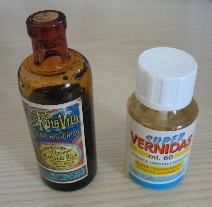
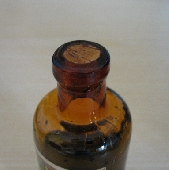
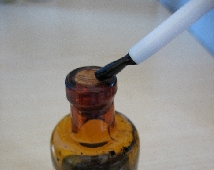
Another system that can be used is the
"Parafilm ©", it is a film of wax and elastic proof
used in chemistry
labs to seal glass containers, because I did not able to
personally experience this film, I refer you to
two interesting articles about tips and Parafilm © evaporation:
http://www.minibottles.com/coll_evaporation.php
http://lauriesminiaturewhiskybottles.com/parafilm.html
Fade labels
In addition to evaporation also exists the
problem of the light that contributes to fade the labels;
I personally found the effect on some mignon exposed in a
showcase.
Fading is still a long process and takes years of exposure
(And not only in direct sunlight inside a home can hit the
windows
but also to same light).
This only happens on a small part of labels, probably it depends
on the type of
ink used for printing.
Of this phenomenon I noticed looking at some photos taken years
before and
comparing them with the relative mignon today.
Here is the result of a miniature exposed for years in the window:

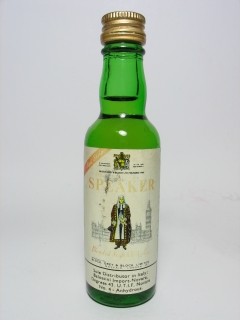
Council collectors to pay attention if you
expose high-value non-mignon
exposing them to the light, especially the direct sun.
The ideal would be to have the windows with tinted windows.